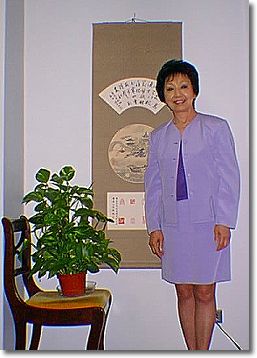
Offering an alternative to conventional medicine, qi gong is an ancient mind-body healing system from China that attempts to cultivate inner energy through a combination of slow movements, meditation and breathing exercises.
The ancient Chinese exercise is growing popular in the United States as part of a broader interest in mind-body medicine. Approximately 160 practitioners belong to the Qi Gong Association of America, formed in November 1997, although an uncounted number are also arriving from Asia. Hundreds of classes are also springing up around the US.
Ken Cohen, author of the best-selling book, The Way of Qigong, thinks it will soon be integrated into the mainstream medical school education. "Qi gong is by sheer numbers the most popular form of complementary treatment in the world," he said. Indeed, the University of California, San Francisco offers a course to medical students called "Complementary Paths of Healing," which covers acupuncture, herbs and qi gong, along with ayurveda, yoga and homeopathy. Courses on complementary medicine are also offered at other top medical schools such as Stanford, Harvard and Georgetown.
Americans are practicing qi gong for chronic ailments ranging from high blood pressure to back pain, multiple sclerosis and insomnia. Corporate bankers and Olympic athletes practice the exercise to improve their stamina and performance. Qi gong is even known to enhance sexual power and to cure impotency.
Dr. Effie Poy Yew Chow, founder and president of the East West Academy of Healing Arts (EWAHA), believes that for those with serious diseases, qi gong may offer new hope.
The EWAHA is located in a small, neatly furnished suite on the 21st floor of a San Francisco high-rise. There, Chow treats "clients," as she prefers to call her patients, with a combination of herbal therapy, acupuncture and qi gong. In a large room furnished with a mirror along the wall, a dance bar and potted plants, she also holds qi gong classes and physical therapy sessions.
Hailing from the Canton province in southern China, Chow moved to Canada at the age of three and grew up in a small Chinese community surrounded by traditional Chinese medicine (TCM). "During those days, being of another ethnic group was not popular," she said. "You hid your culture then. You didn't talk about this funny Chinese medicine stuff because everyone's trying to assimilate and be Western." Today, the story is different. Chinese medicine is popular here, even trendy.

Although some skeptics have dismissed her practice as nothing more than a health promotion center using qi gong quackery, Chow has managed to garner an impressive following. Former clients rave about her "powerful healing abilities." She travels regularly to Canada, where she has set up branches of EWAHA in Vancouver, Ottawa and Toronto.
During qi gong treatments, Chow said that she emits qi, or energy, from the palms of her hands about an inch above the patient's body. Her goal is to untangle all blocked points of energy--the same points that she applies needles to during acupuncture. She also maintains that qi gong is effective as a complement to mainstream health care but admits that "using it together, you don't know whether it was the qi gong or the medicine."
One skeptic is retired oncologist and clinical professor of medicine at Stanford University, Dr. Wallace Sampson. He says qi gong treatments are potentially false and misleading. Sampson is a co-founder of the Scientific Review of Alternative Medicine, a semiannual journal that proposes to fill a vacuum for the scientific critique of unconventional medicine. In Sampson's view, those who practice qi gong therapy are either intentionally or unintentionally "dishonest." He classifies it with other "quackeries" such as crystal healing, chiropractics and psychic surgery.
The Chinese healing practice dates back more than 3000 years, when it first developed as a dance and series of breathing techniques.
"Qi," pronounced chee, refers to energy or life force, while "gong" means "to cultivate." Qi gong is the art of cultivating one's energy, both internal and external. It forms one branch of traditional Chinese medicine (TCM), along with herbal remedies, acupuncture, acupressure, moxibustion and massage.
Like acupuncture, qi gong is based on the belief that all human beings contain a type of energy that circulates throughout their bodies via 12 pathways (also known as meridian systems). When a person is in good health, the circulation of their "qi" flows smoothly. If the qi is blocked in any part of the body, then a health problem occurs. A qi gong master heals a patient by clearing away the blockages and re-balancing the body's energy balance.
More than 1000 different styles of qi gong have developed over the centuries with five major traditions: martial, medical, Taoist, Buddhist and Confucian. Martial qi gong involves performing stunts like walking on a set of butcher knives. Medical qi gong involves healing. Qi gong masters who have cultivated their energy long enough are able to emit it from their hands and to diagnose and treat patients without ever touching them directly.
Qi, they would tell you, is everywhere in the universe.